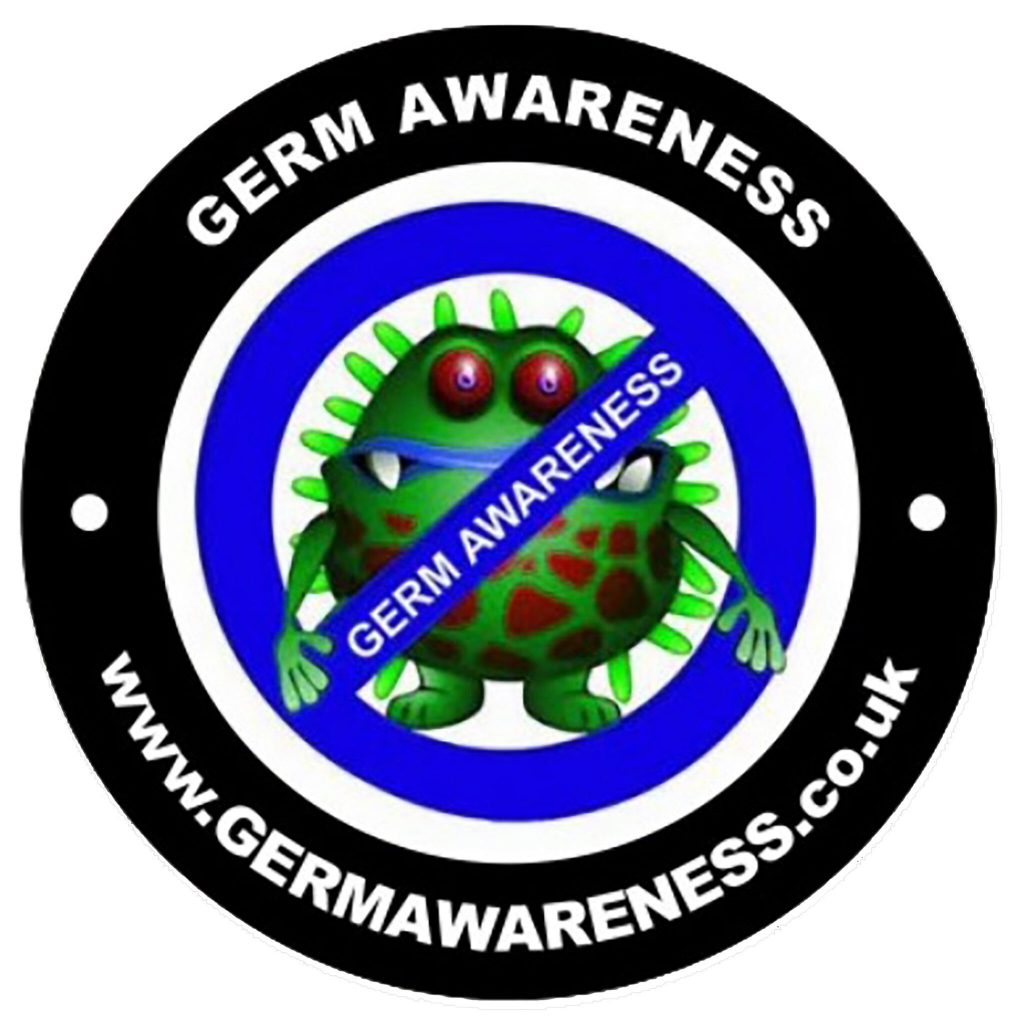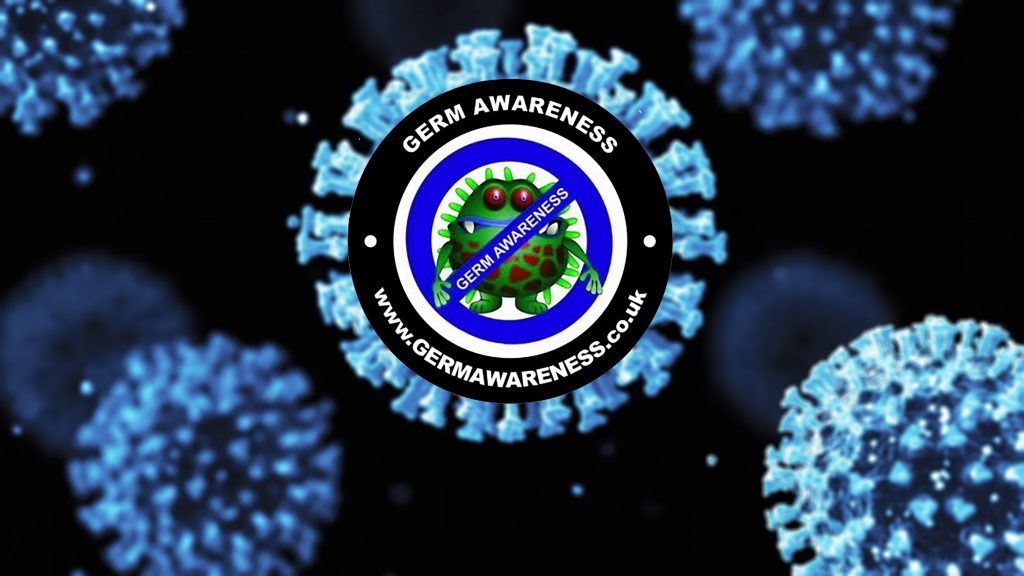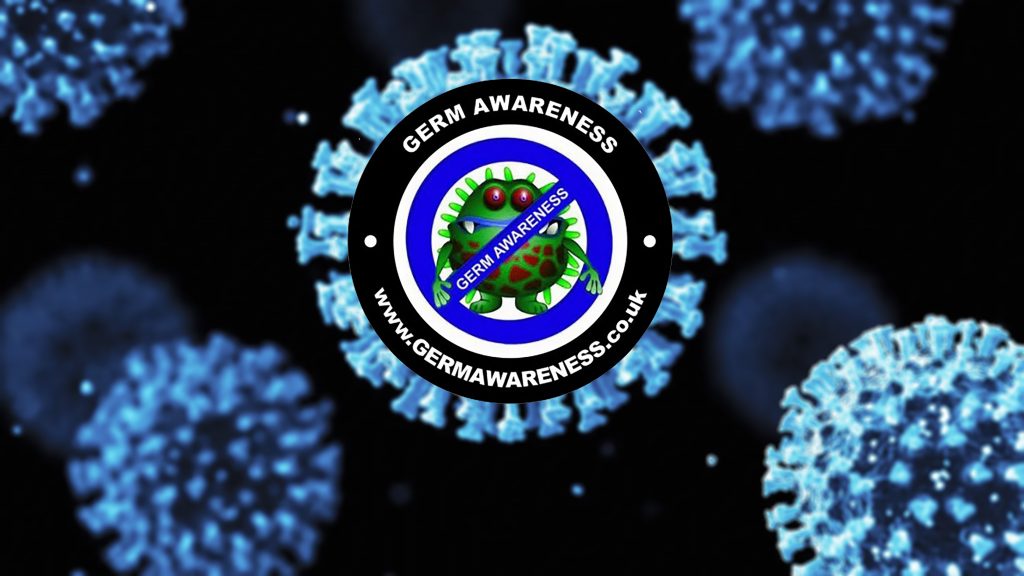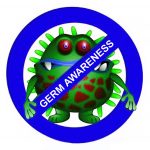
Trigger Disclaimer for Individuals with OCD:
Please be advised that the following content may include detailed instructions or recommendations related to cleaning or hygiene practices. We understand that individuals with Obsessive-Compulsive Disorder (OCD) may have specific triggers related to cleanliness and hygiene. If you have OCD or are sensitive to discussions about cleaning rituals, we recommend exercising caution or seeking support from a trusted healthcare professional before proceeding. Your mental health and well-being are important, and it’s essential to approach information in a way that supports your specific needs and challenges.
A Comprehensive Guide to Germ Contamination and Food Safety: Addressing Concerns for Those with OCD
The anxiety around germ contamination is a significant concern for many, particularly for individuals suffering from Obsessive-Compulsive Disorder (OCD). The recent outbreaks of E. coli and Listeria in the UK, especially linked to spinach and lettuce, have heightened these fears. Understanding the risks associated with food contamination, particularly with cold foods like ham and cooked meats, and adopting effective strategies to mitigate these risks is crucial.
Understanding Germ Contamination
Germ contamination refers to the presence of harmful microorganisms such as bacteria, viruses, parasites, and bugs in food. Cold foods, including ham and cooked meats, are particularly vulnerable to contamination due to improper handling and storage. Pathogens like E. coli and Listeria monocytogenes are common culprits, causing severe illnesses that can be life-threatening, particularly for individuals with weakened immune systems.
Recent Outbreaks and Risks
Recent outbreaks of E. coli and Listeria in the UK have been traced back to contaminated spinach and lettuce, highlighting the importance of stringent food safety measures. These outbreaks can result from poor hygiene practices during harvesting, processing, and distribution. The symptoms of E. coli infection include severe stomach cramps, diarrhea, and vomiting, while Listeria can cause fever, muscle aches, and gastrointestinal issues. For pregnant women, the elderly, and those with compromised immune systems, Listeria poses a particularly high risk.
Challenges for Individuals with OCD
For individuals with OCD, the fear of contamination can be overwhelming. OCD often manifests as persistent, intrusive thoughts and compulsive behaviors aimed at reducing anxiety. In the context of food safety, this might involve excessive washing, cleaning, and avoidance behaviors that can significantly impact daily life. The fear of parasites, bugs, and harmful bacteria can exacerbate these compulsions, making meal preparation and consumption a distressing experience.
Strategies to Eliminate the Risk of Food Contamination
- Proper Storage and Handling: Cold foods like ham and cooked meats should be stored at the correct temperatures (below 5°C) to prevent bacterial growth. Always keep these foods refrigerated and avoid leaving them out for extended periods.
- Hygienic Practices: Wash hands thoroughly with soap and water before handling food. Clean kitchen surfaces and utensils with disinfectant regularly to avoid cross-contamination.
- Safe Cooking and Preparation: Ensure that cooked meats are heated to the appropriate internal temperature before consumption. Use a food thermometer to check the temperature if necessary.
- Buying from Reputable Sources: Purchase food from trusted suppliers who follow stringent safety protocols. Check for recalls and avoid products that have been linked to contamination.
- Vigilance with Raw Produce: Given the recent outbreaks linked to spinach and lettuce, wash all raw vegetables thoroughly under running water. Consider using a vegetable brush for tougher surfaces and soaking leafy greens in a vinegar solution to remove contaminants.
Overcoming OCD Challenges
For individuals with OCD, managing the fear of food contamination requires a combination of practical strategies and psychological support:
- Cognitive-Behavioral Therapy (CBT): CBT is an effective treatment for OCD, helping individuals challenge and change unhelpful thoughts and behaviors. Exposure and Response Prevention (ERP) is a specific type of CBT that gradually exposes individuals to feared situations (like handling food) while preventing compulsive behaviors.
- Mindfulness and Relaxation Techniques: Mindfulness practices can help individuals focus on the present moment and reduce anxiety related to contamination fears. Techniques such as deep breathing, meditation, and progressive muscle relaxation can be beneficial.
- Education and Information: Understanding the actual risks of food contamination and the effectiveness of proper safety measures can help reduce irrational fears. Education about germs, bacteria, and safe food handling practices provides a factual basis to counteract anxiety.
- Support Networks: Connecting with others who have similar experiences can provide emotional support and practical advice. Support groups, both online and in-person, can offer valuable resources and encouragement.
Cleaning Fruits and Vegetables
Ensuring the cleanliness of fruits and vegetables is crucial for maintaining health and preventing foodborne illnesses. Contaminants like germs, bacteria, and parasites can be present on the surface of produce, making it essential to clean them properly before consumption. This guide will walk you through the best practices for cleaning fruits and vegetables, and introduce you to various produce cleaning solutions available on the market.
Why Cleaning Produce is Important
Fruits and vegetables can be exposed to various contaminants during their journey from farm to table. These contaminants can include:
- Dirt and soil: Residue from the fields where the produce was grown.
- Pesticides and chemicals: Used in agriculture to protect crops from pests and diseases.
- Bacteria and germs: Such as E. coli, Salmonella, and Listeria, which can cause foodborne illnesses.
- Parasites: Like Giardia and Cryptosporidium, which can lead to gastrointestinal issues.
Properly cleaning your produce helps reduce the risk of these contaminants and ensures you and your family can enjoy safe, healthy meals.
General Guidelines for Cleaning Produce
- Start with Clean Hands: Always wash your hands with soap and water before handling fruits and vegetables to prevent the transfer of germs from your hands to the produce.
- Use Clean Surfaces and Utensils: Ensure that cutting boards, knives, and countertops are clean before use to avoid cross-contamination.
- Rinse with Cold Water: Most fruits and vegetables can be cleaned effectively by rinsing them under cold, running water. This helps remove dirt and surface contaminants.
- Use a Brush for Firm Produce: For items like potatoes, carrots, and melons, use a clean produce brush to scrub the surface and remove any stuck-on dirt.
- Peel and Trim When Necessary: Removing the outer layers or peels of certain produce (like lettuce or onions) can help eliminate contaminants.
Specific Cleaning Techniques
- Leafy Greens (Lettuce, Spinach, Kale): Separate the leaves and soak them in a bowl of cold water. Swish them around to loosen dirt and then rinse each leaf under running water.
- Berries (Strawberries, Blueberries, Raspberries): Place berries in a colander and rinse them gently under cold water. Avoid soaking berries as they can become waterlogged and lose flavor.
- Root Vegetables (Potatoes, Carrots, Beets): Scrub these under running water with a brush to remove soil and debris. You can peel them if desired.
- Fruits with Edible Skins (Apples, Pears, Peaches): Rinse under running water and use a brush for any hard-to-remove dirt.
- Produce with Thick Skins (Melons, Avocados, Pineapples): Even though you don’t eat the skin, wash these items thoroughly to prevent transferring contaminants from the skin to the flesh when cutting.
Produce Cleaning Solutions
In addition to water, there are various produce cleaning solutions available that can help eliminate more stubborn contaminants like pesticides and bacteria. These solutions are specially formulated to be safe for food use and can be found in most grocery stores or online.
- Commercial Produce Washes: Products like Fit Organic Produce Wash and Veggie Wash are designed to break down and remove pesticides, waxes, and dirt more effectively than water alone. Follow the instructions on the label for proper use.
- Homemade Solutions: A simple solution of one part vinegar to three parts water can be used to soak and clean produce. Vinegar is effective in reducing bacteria and dissolving pesticide residues. Rinse thoroughly with water after soaking.
- Baking Soda Solution: Mixing a few tablespoons of baking soda with water can create a solution that helps remove pesticide residues. Soak the produce in this solution for a few minutes and then rinse well.
- Dry Thoroughly: After washing, dry produce with a clean towel or paper towel to remove any remaining contaminants and reduce moisture, which can promote the growth of bacteria.
- Store Properly: Store cleaned produce in clean containers and refrigerate as necessary to maintain freshness and prevent contamination.
- Stay Informed: Keep up-to-date with food safety guidelines from trusted sources like the FDA or CDC to ensure you are using the best practices for cleaning and handling produce.
By following these guidelines and utilizing produce cleaning solutions, you can significantly reduce the risk of consuming harmful contaminants and enjoy fresh, healthy fruits and vegetables safely.
Homemade Solutions for Cleaning Fruits and Vegetables with Antibacterial Properties
Using homemade solutions to clean fruits and vegetables can effectively remove contaminants, including bacteria. Here are some simple recipes using common household ingredients, along with their antibacterial properties:
1. Vinegar and Water Solution. Ingredients:
- 1 cup white vinegar
- 3 cups water
Antibacterial Properties:
- White Vinegar: Contains acetic acid, which has antimicrobial properties that can kill bacteria and other pathogens.
Instructions:
- Mix the vinegar and water in a large bowl or spray bottle.
- Soak the produce in the solution for 5-10 minutes.
- Rinse thoroughly with cold water.
- Dry with a clean towel or paper towel.
2. Baking Soda and Water Solution
Ingredients:
- 1 tablespoon baking soda
- 4 cups water
Antibacterial Properties:
- Baking Soda: Has mild antimicrobial properties and can help to remove pesticides and dirt.
Instructions:
- Dissolve the baking soda in the water.
- Soak the produce in the solution for 5-10 minutes.
- Scrub firm produce with a brush if needed.
- Rinse thoroughly with cold water.
- Dry with a clean towel or paper towel.
3. Lemon Juice and Water Solution
Ingredients:
- 1 tablespoon lemon juice
- 2 cups water
Antibacterial Properties:
- Lemon Juice: Contains citric acid, which has natural antibacterial and antiviral properties.
Instructions:
- Mix the lemon juice and water in a bowl or spray bottle.
- Spray the solution onto the produce or soak the produce in the bowl for 5-10 minutes.
- Rinse thoroughly with cold water.
- Dry with a clean towel or paper towel.
4. Salt and Water Solution
Ingredients:
- 1 tablespoon salt
- 4 cups water
Antibacterial Properties:
- Salt: Has antimicrobial properties that can help kill bacteria and other pathogens.
Instructions:
- Dissolve the salt in the water.
- Soak the produce in the solution for 5-10 minutes.
- Rinse thoroughly with cold water.
- Dry with a clean towel or paper towel.
5. Apple Cider Vinegar and Water Solution
Ingredients:
- 1 cup apple cider vinegar
- 3 cups water
Antibacterial Properties:
- Apple Cider Vinegar: Contains acetic acid, which has antimicrobial properties that can kill bacteria and other pathogens.
Instructions:
- Mix the apple cider vinegar and water in a large bowl or spray bottle.
- Soak the produce in the solution for 5-10 minutes.
- Rinse thoroughly with cold water.
- Dry with a clean towel or paper towel.
6. Hydrogen Peroxide and Water Solution
Ingredients:
- 1 tablespoon 3% hydrogen peroxide
- 1 cup water
Antibacterial Properties:
- Hydrogen Peroxide: Has strong antibacterial and antiviral properties and can effectively kill bacteria on the surface of produce.
Instructions:
- Mix the hydrogen peroxide and water in a spray bottle.
- Spray the solution onto the produce and let it sit for 5-10 minutes.
- Rinse thoroughly with cold water.
- Dry with a clean towel or paper towel.
Tips for Using Homemade Solutions
- Mix Fresh: Prepare these solutions fresh each time you plan to use them to ensure their effectiveness.
- Rinse Well: Always rinse produce thoroughly with cold water after using any cleaning solution to remove any residue.
- Use Clean Containers: Ensure that bowls, spray bottles, and any other containers used are clean to prevent cross-contamination.
These homemade solutions are easy to prepare and use, providing an extra layer of cleanliness and antibacterial protection for your fruits and vegetables.
Conclusion
While the fear of food contamination is a valid concern, especially given recent outbreaks, adopting proper food safety measures and seeking psychological support can help individuals, particularly those with OCD, manage and overcome these fears. By staying informed and implementing practical strategies, it is possible to enjoy food safely without undue anxiety.
Food prepared and packaged in factories is typically handled by advanced robotic systems that ensure precision, hygiene, and consistency throughout the process. These automated systems minimize human contact with the food itself, significantly reducing the risk of contamination. However, the outer packaging, such as boxes and wrappers, is usually handled by people during the final stages of the production line, including labeling, quality checks, and distribution. This careful division of labor ensures that the food remains as clean and safe as possible until it reaches the consumer.
Finally, to ensure that utensils and dishes are thoroughly clean, using an antibacterial washing-up liquid can be highly effective. This type of detergent not only removes food residues and grease but also eliminates harmful bacteria that can lead to contamination. By diligently washing and rinsing utensils with antibacterial soap, individuals can significantly reduce the risk of spreading germs, creating a safer and more hygienic environment for food preparation and consumption.
Further Reading
- How to properly wash fruits and vegetables | Popular Science (popsci.com)
- Homepage | Food Standards Agency
- E.coli warning signs to look out for after supermarket sandwiches ’cause’ fatal outbreak – Mirror Online
- Urgent recall of 40 types of bagged spinach due to deadly listeria (msn.com)


































